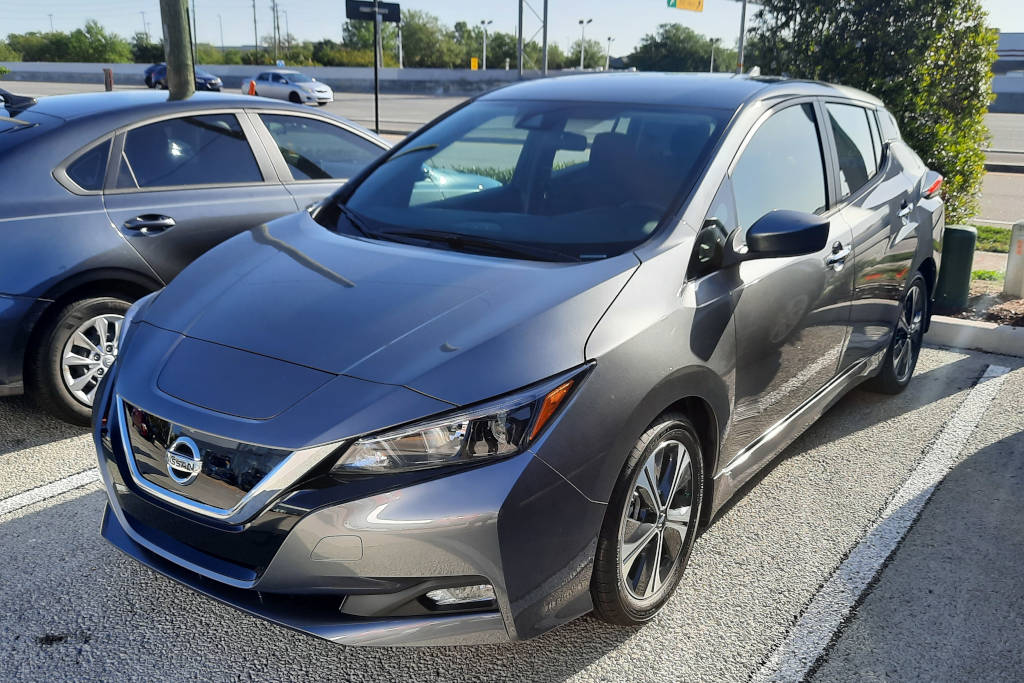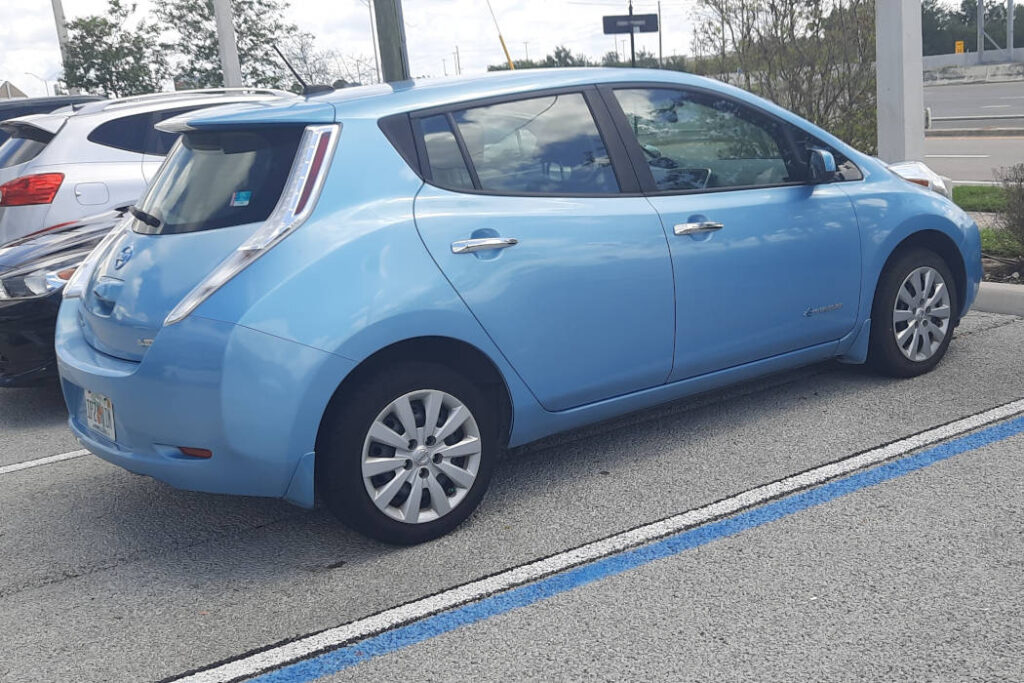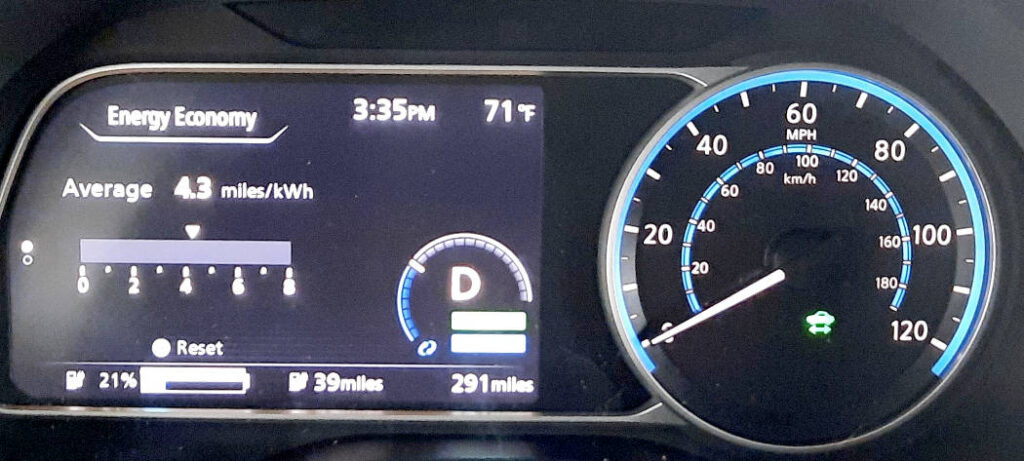After four months of owning a 2022 Nissan Leaf, I thought I would share my opinion of the automobile. This is my second Leaf. The first was a 2015 Leaf that I considered to be my favorite car up to that point. The reason I traded that car in was discussed in a previous post.
The first thing you notice when comparing a 2022 Leaf with the 2015 model is that it looks more like a normal car and less like a big frog. That means that you won’t get the attention that you might have gotten driving the older version but that could be good or bad, depending on how much attention you want. But this is not meant to be a comparison between the two cars.


I bought the Leaf SV with a 40 kWh battery. The Leaf has three models, an S, an SV, and an SL. The S is the most basic, followed by the SV, and then the SL which has the most features. If there is a “Plus” after the designation, it means it has the larger 62 kWh battery. It also means it is $5,000 to $6,000 more costly.
Since I rarely had a problem with the range of my old Leaf, which had a 24 kWh battery, I didn’t feel the need to spend the extra money. If I was going to be doing a lot of long-distance driving, then I would want the bigger battery, but 90 percent of my driving is within 5 miles of my home. Most of the rest is within 20 miles of my home. If something came up where I had to drive across the state, I would either map out fast charger locations or rent a car. Renting a car on rare occasions is far cheaper than springing for the larger battery.
The official range for the 40 kWh battery is 149 miles but that depends on how you drive. It could be more or it could be less. There is a feature on the dash that shows you where you are on the efficiency scale. It is actually a good way to challenge yourself to try to push up your efficiency rating. I often find myself driving like an old lady so I can increase my rating. I started at around 4.1 miles per kWh and eventually pushed it up to 4.4 before settling in at 4.3. I believe the calculations only count recent miles but I do not know the formula. Lately, I dropped down to 4.2, which still translates to 168 miles on a charge.

The reason I get better than average economy is partly that I drive conservatively but mostly because I drive almost exclusively around town. If I were to take a trip on the highway and drive over 70 MPH, then the miles per kWh would drop. I am not sure why but, unlike with gasoline-powered vehicles, city driving is more efficient than highway driving in an electric car. I’m sure part of the reason is that no energy is expended while sitting at a light, unlike gasoline engines which must idle.
The car has several safety features that are nice. The one I like most is a blind spot warning. If you put on the turn signal and there is a car next to you, the car gives you an audible warning, and a yellow light blinks in your mirror. Another feature vibrates the steering wheel if you start to drift out of your lane. It has collision avoidance features too that involve automatic braking but I have not had any desire to try them out.
The driving display allows you to cycle through several screen options. The one I like shows the driving efficiency, as shown above. It also shows the total miles and miles left on the charge. Another screen has the remaining miles more prominently displayed along with the power usage. There is another display that shows what you are listening to and, if you want to navigate old school, you can bring up a compass.
The media center touchscreen display allows a bit of customization but it is cumbersome to change and could use an upgrade. It does sync with Android Auto and Apple CarPlay, which is nice.

There are also a couple of buttons near the shift knob that helps with efficiency. Eco mode decreases motor output somewhat and also increases slightly regenerative braking. Regenerative braking essentially recaptures kinetic energy when slowing and puts it back into the battery. If you turn on e-Pedal, that is like regenerative braking on steroids. Some people call it one-pedal driving because when you take your foot off the accelerator, you can feel the car rapidly slowing down while it recaptures energy. Driving with the e-Pedal on means you never have to use the brake pedal except in an emergency. Of course, it does take a little getting used to but once you get the hang of it it will be like second nature.
The car is quiet, like all-electric cars, but I noticed a slightly louder hum than on my 2015 leaf. There was over a six-month gap between trading in my old leaf and buying a new one so my memory could be faulty. What hasn’t changed is the loud, annoying noise the car makes while backing up. I would like to find a way to muffle it a little so I can back up my car early in the morning without waking the neighbors. My wife’s Tesla, on the other hand, sounds like a relatively quiet alien spacecraft landing nearby. Nissan should do something like that on future models.
My 2015 leaf came with a home charger that plugged into a 110-volt outlet. The charger that comes with the 2022 model will plug into a 220 outlet and has a 110 adapter. This is a great upgrade, even though I only have a 110 outlet near my driveway. I have not had a need yet to add a 220 outlet but it is nice to know I can do that. I could also pay to have a home charger installed and save the portable charger as a backup.
The Leaf also comes with two charging ports, a standard J1772 port for level 1 (110) and level 2 (220) charging, and a ChAdeMO port for fast charging. I read that the CHAdeMO port is outdated but with all the cars on the road that use it, I can’t imagine that the fast chargers out there will stop offering it as an option any time soon. Interestingly, the word comes from the Japanese phrase pronounced “o CHA deMO ikaga desuka,” Which means something like “How about a cup of tea?” The reason that is used is that the charge time is about the same time it would take to have a cup of tea.
All in all, I think the 2022 Nissan leaf is an excellent car for the money. Yes, my wife’s Tesla is better than my Nissan Leaf, but for the money she spent, I could buy two Leafs and still have $10,000 left over. That is a great deal in my book.
Check back soon and I will talk about the energy costs of electric cars and the hidden reason why buying an electric car is good for the environment despite the naysayer’s reasons why it is not.
